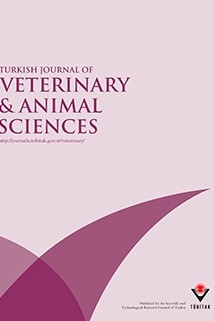
Turkish Journal of Veterinary and Animal Sciences
Yazarlar: Mustafa YILDIZ, Erdal ŞENER
Konular:-
Anahtar Kelimeler:Dicentrarchus labrax,Growth,Vegetable oil,Fatty acids composition
Özet: Body fat composition and growth performance of sea bass juveniles fed with different kinds of vegetable oils instead of fish oil were studied. Feeding trials were carried out with 600 sea bass (Dicentrarchus labrax L.) juveniles with on initial live weight of 7.58 ± 0.13 g. Experimental feeds contained fish oil, soybean oil, sunflower oil, corn oil and olive oil. In the chemical analyses of the experimental feeds, total crude fat was 12.33 ± 0.24% and total crude protein was 57.42 ± 0.31%. According to fatty acid analyses EPA (7.57%) and DHA (11.91%) in the feed containing fish oil, linolenic acid (5.50%) in the feed containing soybean oil and oleic acid (62.69%) in the feed containing olive oil were found in higher levels than in the other feeds. However, linoleic acid (18:2n-6) levels were 40.66% in soybean oil, 44.58% in sunflower oil and 45.57% in corn oil added feeds (P < 0.05). At the end of the feeding trials, the highest live weight gain and the best feed conversion ratio (FCR) were achieved with feed containing fish oil. However, live weight gain and FCR were present in lower levels in the feed containing corn oil than in the other feeds (P < 0.05). According to the crude fat analyses of the fish carcasses at the end of the feeding trials, the highest carcass fat values were in the fish fed fish oil added diets. In the fatty acids analyses of the whole fish bodies, higher values of EPA and DHA were found in the fish fed fish oil added diets than in the others. Linolenic acid (18:3n-3) and linoleic acid (18:2n-6) levels were higher in the fish fed soybean oil added feeds than in the others, and oleic acid (18:1n-9) was present in higher levels in the fish fed olive oil added feeds than in the others. In the statistical analyses, the live weight gain and carcass fat content and fatty acid composition in the experimental groups were significantly different (P < 0.05).
Dergi editörleri editör girişini kullanarak sisteme giriş yapabilirler. Editör girişi için tıklayınız.